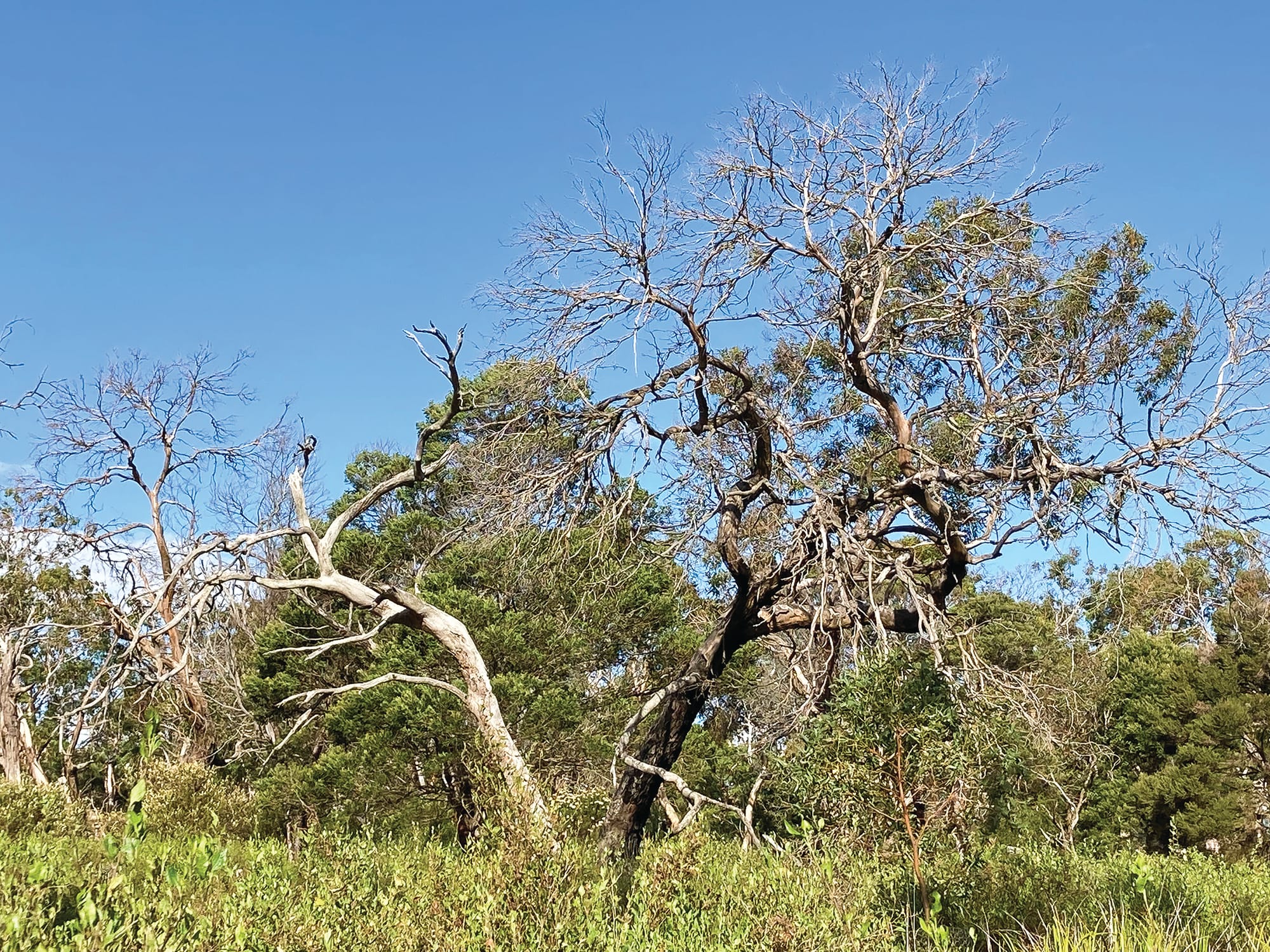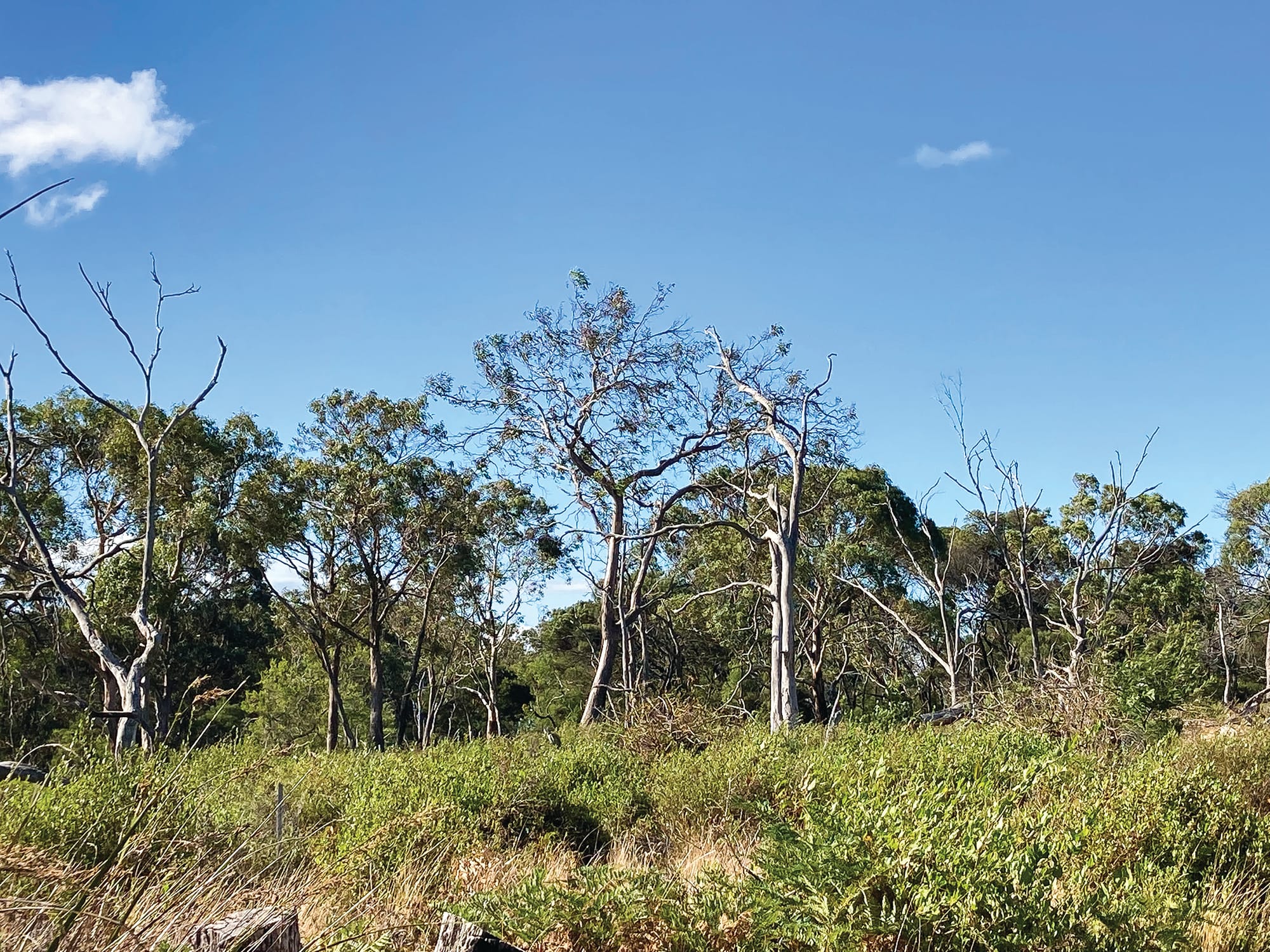Do you have eucalypt dieback on your property?
Over the past several years, people all over Phillip Island have noticed Eucalyptus trees, young and old, dying back.

Over the past several years, people all over Phillip Island have noticed Eucalyptus trees, young and old, dying back. The nature of dieback in different areas can vary due to many complex, and often interacting causes.
“At its best, indigenous vegetation on Phillip Island is fragmented and patchy, due to widespread historic land clearing,” said Lisa Wangman, facilitator for the Phillip Island Landcare Group.
“These often isolated and exposed vegetation patches are under many additional pressures from insect and animal attack, lack of insectivorous birds due to a lack of understorey shrubs, changed nutrient loads, weed invasion, soil acidification and compaction, just to name a few.”
Phillip Island Landcare group (PILG) have formed a sub-committee of scientists, farmers, Phillip Island Nature Parks and Bass Coast Shire Council representatives to look into local dieback issues.
You can help in the research on this issue as a landholder or community member, by becoming a citizen scientist.
To make this easy for you a Pilot Dieback Survey Program will soon be launched. There will be a simple survey form designed by the committee, with instructions on how to survey eucalyptus trees on your property or roadside.
To launch this new program, Phillip Island Landcare Group invites you to a walk and talk session on Saturday April 1 from 10am-12pm, at Oswin Roberts reserve, meeting at the Harbison Road entry car park.
The walk, led by committee members including botanists, ecologists and local farmers, will show some areas of dieback within the reserve, and discuss some of the issues.
This is a free session, and anyone is welcome, but please register at this link: www.eventbrite.com.au/e/eucalypt-dieback-walk-and-talk-in-oswin-roberts-to-discuss-the-issue-tickets-590561935647


An introduction to the survey process and demonstration of using the new survey form will be part of this day.
Information on how to get involved and the survey form will be available at the Phillip Island Landcare Group website at www.phillipislandlandcare.org.au after the event.
“Phillip Island Landcare Group needs your help to record the location, extent and nature of any dieback happening on your properties or roadsides,” said Lisa.
“Collecting information on where dieback is occurring across the island with any factors affecting local trees, may help us to see if any patterns emerge on the potential causes on Phillip Island.”
All that is required is to fill out a simple survey sheet looking at any eucalyptus trees affected on your property, take some photographs, and submit to Landcare.
This event and program development is supported by the Victorian Government Biodiversity Action Grants.
For more information please see the Phillip Island Landcare website or contact Lisa Wangman, Group Facilitator for the Phillip Island Landcare group on lisa.wangman@basscoastlandcare.org.au.
www.basscoastlandcare.org.au/phillipisland.html
/ Sponsored article /






